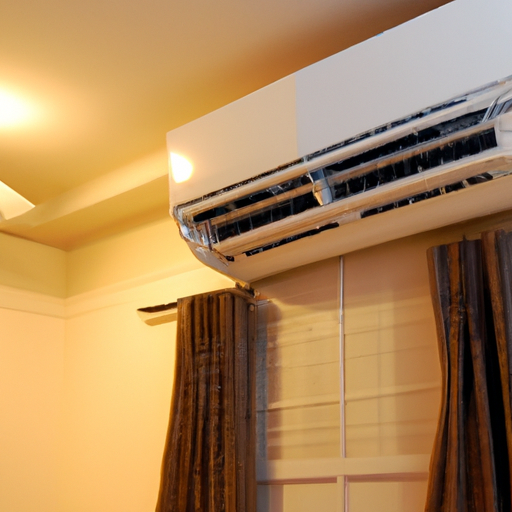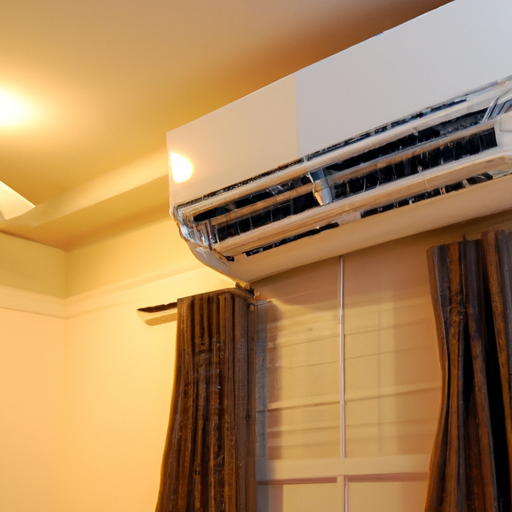This article examines the potential impact of a ductless mini-split system on indoor air quality. Mini split heating and cooling systems are versatile and can be utilized in various settings, including residential homes, garages, work sheds, and large buildings like warehouses. However, the question arises as to how these systems may influence the quality of the air we breathe indoors. By exploring the features and functions of ductless mini-split systems, this article aims to provide a comprehensive understanding of their effects on indoor air quality, ensuring that you can make informed decisions regarding the installation and use of these systems in your environment.
What is a ductless mini-split system?
Definition
A ductless mini-split system, also known as a ductless air conditioner or heat pump, is a type of HVAC system that provides both heating and cooling without the need for ductwork. It consists of two main components: an outdoor unit and one or more indoor units. The outdoor unit contains the compressor and condenser, while the indoor units are responsible for distributing conditioned air within the space.
Components
A ductless mini-split system typically includes an outdoor unit, indoor units, refrigerant lines, and a remote control. The outdoor unit houses the compressor and condenser, which are responsible for cooling or heating the refrigerant. The indoor units, which are usually mounted on the wall or ceiling, deliver conditioned air into the space. Refrigerant lines connect the outdoor unit to the indoor units, allowing for the transfer of heat or cooling energy. The remote control allows users to adjust temperature settings and control various functions of the system.
How it works
The operation of a ductless mini-split system involves the transfer of heat or cooling energy between the indoor and outdoor units. During cooling mode, the indoor unit absorbs heat from the indoor air and transfers it to the refrigerant. The refrigerant then flows to the outdoor unit, where it releases the heat to the outside air. In heating mode, the process is reversed, with the outdoor unit extracting heat from the outside air and transferring it to the indoor units. This heat transfer process enables the system to provide efficient heating and cooling without the need for ductwork.
Indoor Air Quality (IAQ) Basics
What is indoor air quality?
Indoor air quality refers to the overall quality of the air inside a building or enclosed space. It encompasses various factors such as temperature, humidity, ventilation, and the presence of contaminants. Good indoor air quality is essential for maintaining a healthy and comfortable environment, as poor IAQ can lead to health issues and discomfort.
Factors affecting indoor air quality
Several factors can impact indoor air quality, including inadequate ventilation, high humidity levels, temperature fluctuations, and the presence of indoor pollutants such as allergens, dust, mold, and volatile organic compounds (VOCs). These factors can contribute to respiratory problems, allergies, and other health issues.
Importance of maintaining good IAQ
Maintaining good indoor air quality is crucial for the health and well-being of occupants. Poor IAQ can lead to a range of health problems, including respiratory issues, allergies, and asthma. Additionally, it can negatively impact productivity, comfort, and overall quality of life. By understanding and addressing the factors that affect IAQ, such as the choice of HVAC system, occupants can create a healthier and more comfortable living or working environment.

Potential IAQ Concerns with Ductless Mini-Split Systems
Air circulation
One potential concern with ductless mini-split systems is air circulation. Unlike central HVAC systems that rely on ductwork to distribute air throughout the building, ductless systems use individual indoor units to deliver conditioned air. This setup may lead to less efficient air circulation in larger spaces or areas located far from the indoor unit. Adequate airflow is important for maintaining proper ventilation and evenly distributing conditioned air throughout the space.
Lack of central filtration
Another potential IAQ concern with ductless mini-split systems is the lack of a central filtration system. Unlike systems with ductwork that can be equipped with air filters at the main return grille, ductless systems typically rely on built-in filters within the individual indoor units. While these filters can trap some airborne particles, they may not be as effective in capturing larger particles or pollutants present in the indoor air.
Risk of contaminants
Ductless mini-split systems can potentially pose a risk of contaminants if proper maintenance and cleaning are not performed regularly. Dust, dirt, mold, and bacteria can accumulate on the indoor unit’s evaporator coils, blower, and other components, jeopardizing indoor air quality. It is essential to adhere to a regular maintenance schedule to keep the system clean and free from contaminants.
Maintenance and cleaning
Maintenance and cleaning are crucial aspects of ensuring good indoor air quality with ductless mini-split systems. Regular cleaning of the indoor unit’s filters, coils, and other components helps prevent the buildup of dust, mold, and other contaminants. Additionally, proper maintenance includes inspecting for any leaks or damage, and promptly addressing any issues identified. By following a maintenance schedule and keeping the system clean, occupants can help improve the indoor air quality.
Benefits of Ductless Mini-Split Systems for Indoor Air Quality
Improved air filtration
While ductless mini-split systems may lack central filtration, they typically come with built-in air filters within the indoor units. These filters can help trap airborne particles, dust, and allergens, improving indoor air quality. It is important to regularly clean or replace these filters according to the manufacturer’s recommendations to maintain their effectiveness.
Zoned cooling and heating
Ductless mini-split systems offer zoned cooling and heating capabilities, allowing users to individually control the temperature in different areas or rooms. This zoned approach can be beneficial in terms of indoor air quality, as it allows occupants to customize the comfort settings based on their preferences. By conditioning only the occupied areas, energy waste can be minimized, and the efficiency of the system can be maximized.
Reduced risk of duct-related contaminants
One of the advantages of ductless mini-split systems is their lack of ductwork. Traditional HVAC systems with ducts can accumulate dust, mold, and other contaminants over time, which can then be distributed into the indoor air. With ductless systems, the absence of ductwork reduces the risk of these contaminants being circulated, contributing to improved indoor air quality.
Ventilation options
Ductless mini-split systems can be used in conjunction with other ventilation options to enhance indoor air quality. Additional components such as energy recovery ventilators (ERVs) or heat recovery ventilators (HRVs) can be integrated with the system to bring in fresh outdoor air while expelling stale indoor air. This ventilation helps remove indoor pollutants and replenish the space with clean, fresh air, contributing to better indoor air quality.
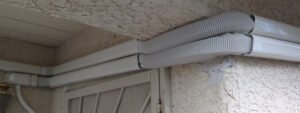
Filtering and Purification
Built-in filtration systems
Ductless mini-split systems typically come equipped with built-in air filters within the indoor units. These filters are designed to capture airborne particles, dust, and allergens, improving indoor air quality. Regular cleaning or replacement of these filters is important to ensure their effectiveness and prevent the accumulation of contaminants.
Additional air purification options
In addition to the built-in filters, there are also additional air purification options available for ductless mini-split systems. These include portable air purifiers, which can be placed in rooms to further improve indoor air quality. These devices use various filtration and purification technologies to capture and remove a wider range of contaminants from the air.
Effectiveness in removing pollutants
The effectiveness of ductless mini-split systems in removing pollutants from the indoor air depends on several factors, including the quality of the built-in filters, the frequency of filter cleaning or replacement, and the presence of additional air purification options. By ensuring regular maintenance and cleaning, and considering the use of additional air purification devices, occupants can enhance the system’s ability to remove pollutants and improve indoor air quality.
Controlling Humidity
Effects of humidity on IAQ
Humidity levels play a significant role in indoor air quality. High humidity can promote the growth of mold, bacteria, and other allergens, leading to respiratory issues and discomfort. On the other hand, low humidity can cause dryness, irritation, and static electricity problems. Maintaining optimal humidity levels is important for creating a comfortable and healthy indoor environment.
Dehumidification capabilities
Ductless mini-split systems have the capability to dehumidify the air, helping to maintain appropriate humidity levels. These systems typically include a dehumidification mode, which removes excess moisture from the indoor air as it cools. By dehumidifying the air, ductless systems can help prevent mold growth, reduce allergens, and create a more comfortable living or working environment.
Humidification options
Some ductless mini-split systems also offer humidification capabilities, allowing users to increase humidity levels in dry environments. This feature can be particularly beneficial during winter months or in regions with low ambient humidity. By adding moisture to the air, these systems can alleviate dryness, reduce respiratory discomfort, and prevent issues such as dry skin and static electricity.
Maintaining optimal humidity levels
To maintain optimal humidity levels with a ductless mini-split system, it is important to monitor and adjust the settings based on the specific needs of the space. Regularly checking the humidity levels using a hygrometer and adjusting the system’s settings accordingly can help ensure a comfortable and healthy indoor environment. Proper maintenance of the system, including cleaning filters and ensuring adequate airflow, can also contribute to effective humidity control.
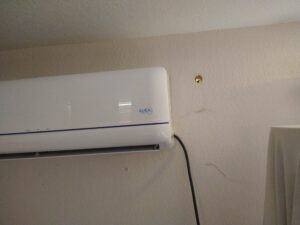
Maintenance and Cleaning
Importance of regular maintenance
Regular maintenance is essential for ensuring optimal performance and indoor air quality with a ductless mini-split system. It is recommended to follow the manufacturer’s guidelines for maintenance tasks and frequency. Regular maintenance helps prevent the buildup of dust, dirt, mold, and other contaminants, ensuring clean and healthy indoor air.
Cleaning the indoor unit
Cleaning the indoor unit of a ductless mini-split system is a crucial maintenance task. This involves cleaning the filters, evaporator coils, blower, and other components to remove dirt, dust, and other contaminants. It is important to follow the manufacturer’s instructions for cleaning and use appropriate cleaning products or techniques to avoid damaging the unit.
Cleaning the outdoor unit
In addition to the indoor unit, the outdoor unit of a ductless mini-split system also requires regular cleaning. This involves removing any debris, leaves, or dirt that may have accumulated on or around the unit. Regular cleaning of the outdoor unit helps maintain optimal airflow and prevents any obstructions that could affect the system’s performance.
Changing filters
Regularly changing the filters of a ductless mini-split system is crucial for maintaining good indoor air quality. Filters can become clogged with dirt, dust, and other contaminants over time, reducing their effectiveness in capturing airborne particles. Follow the manufacturer’s recommendations for filter replacement frequency and choose high-quality filters to ensure maximum filtration efficiency.
Common IAQ Issues and Solutions
Allergens and pollutants
One common indoor air quality issue is the presence of allergens and pollutants in the indoor air. These can include dust mites, pet dander, pollen, mold spores, and volatile organic compounds (VOCs). To address this issue, regular cleaning and maintenance of the ductless mini-split system, along with the use of effective air filters and purification devices if necessary, can help remove or reduce the concentration of these allergens and pollutants.
Condensation and mold
Condensation and resulting mold growth can be a concern in spaces with high humidity levels or inadequate ventilation. To prevent condensation and mold issues, it is important to maintain proper humidity levels, ensure adequate ventilation, and regularly clean and inspect the ductless mini-split system for any signs of moisture or mold. Promptly addressing any moisture or mold problems can help maintain good indoor air quality.
Odor control
Unpleasant odors can diminish indoor air quality and affect occupant comfort. To address odor issues, regular cleaning of the ductless mini-split system is important to remove any sources of odor-causing contaminants. Additionally, the use of air purifiers or ventilation options can help cycle the air, removing odors and improving indoor air quality.
Ventilation concerns
Inadequate ventilation can lead to poor indoor air quality by trapping pollutants and limiting the supply of fresh air. To address ventilation concerns, it is important to ensure that the ductless mini-split system is properly sized for the space and that it is used in conjunction with other ventilation options if needed. This can include the use of energy recovery ventilators (ERVs) or heat recovery ventilators (HRVs) to bring in fresh outdoor air and remove stale indoor air, helping to maintain good indoor air quality.
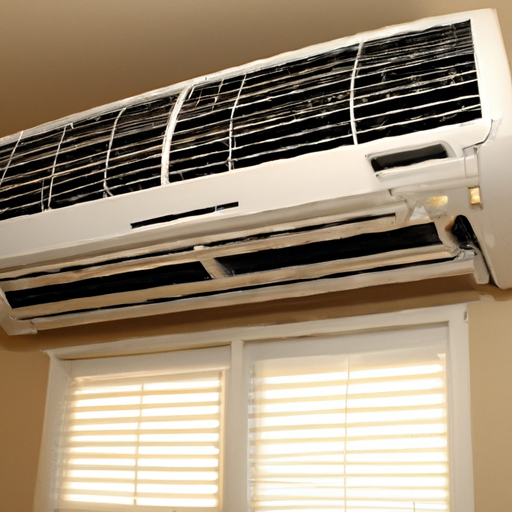
Best Practices for Maintaining Good IAQ with a Ductless Mini-Split System
Regular system inspections
Perform regular inspections of the ductless mini-split system to identify any issues or signs of wear and tear. This includes checking for leaks, blockages, or any unusual noises. Early detection and prompt resolution of any problems can help ensure the system continues to operate efficiently and maintain good indoor air quality.
Frequent filter changes
Regularly clean or replace the filters in the indoor units according to the manufacturer’s recommendations. This ensures maximum filtration efficiency and prevents the buildup of dust, allergens, and pollutants that could reduce indoor air quality. Paying attention to filter maintenance is crucial for achieving and maintaining good IAQ with a ductless mini-split system.
Proper ventilation
Consider the ventilation needs of the space and ensure that the ductless mini-split system is properly ventilated. If additional ventilation options are required, such as energy recovery ventilators (ERVs) or heat recovery ventilators (HRVs), consult with a professional to determine the best solution for maintaining good indoor air quality.
Avoiding indoor pollutants
To maintain good indoor air quality, it is important to avoid introducing or accumulating pollutants in the indoor environment. This includes avoiding smoking indoors, using toxic cleaning products, or storing chemicals or pollutants that could release harmful fumes. Maintaining a clean and healthy indoor environment can significantly contribute to improved IAQ.
Conclusion
Ductless mini-split systems offer several benefits for indoor air quality while providing efficient heating and cooling. With improved air filtration, zoned cooling and heating capabilities, reduced risk of duct-related contaminants, and additional ventilation options, these systems contribute to a healthier and more comfortable indoor environment. However, regular maintenance, cleaning, and adherence to best practices are essential for maximizing their impact on indoor air quality. By considering specific needs and choosing the right system, occupants can enjoy the benefits of a ductless mini-split system while maintaining optimal indoor air quality.
